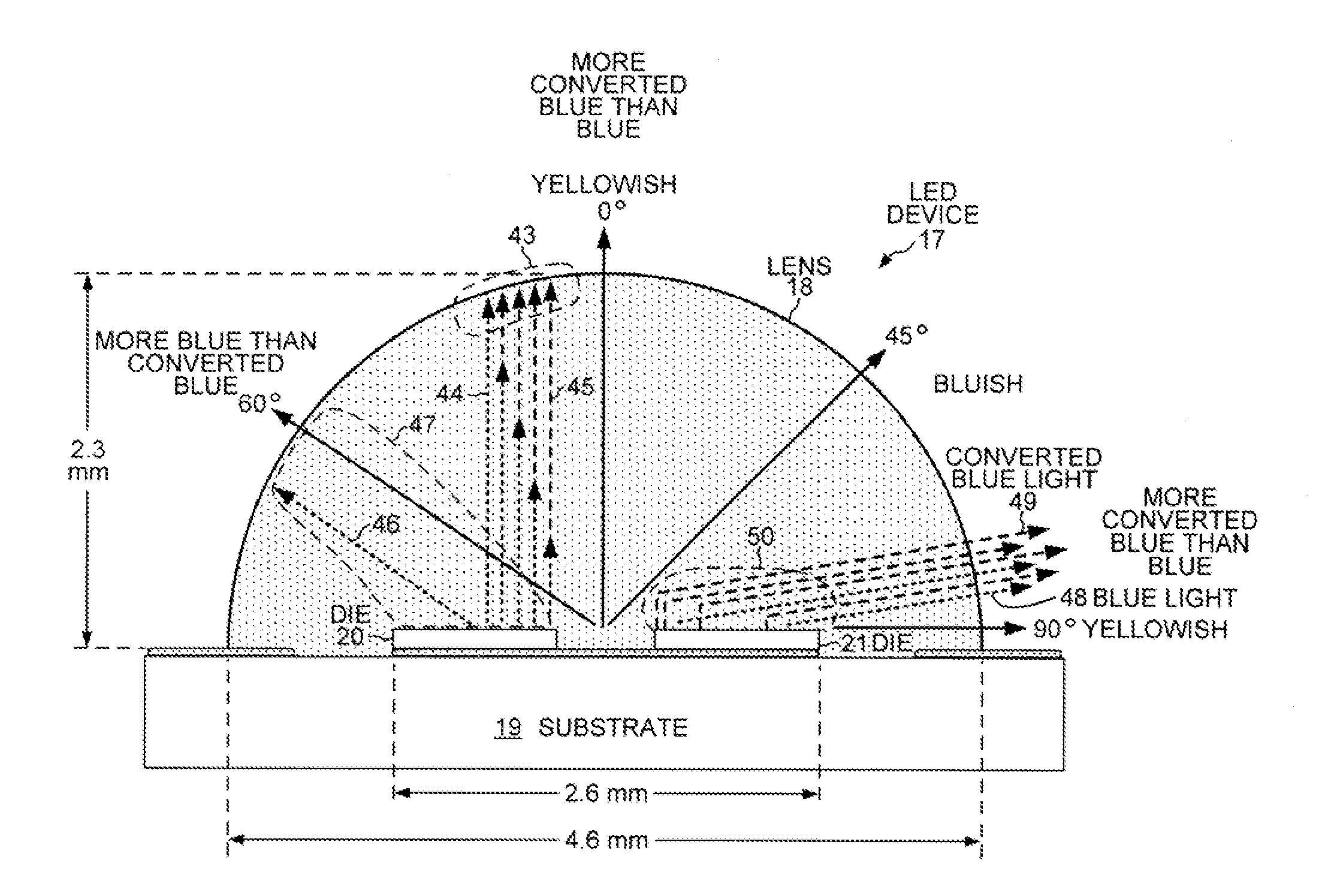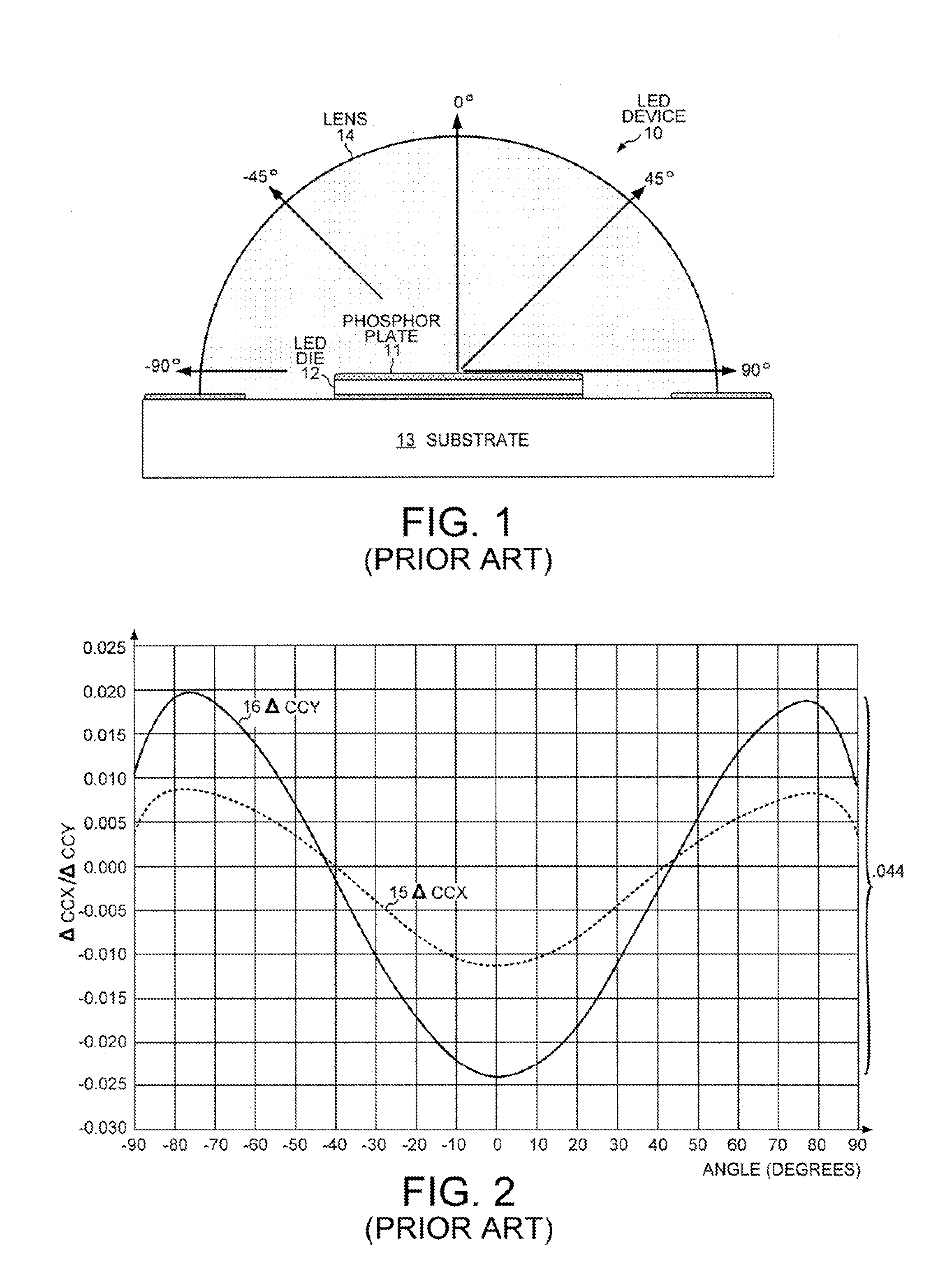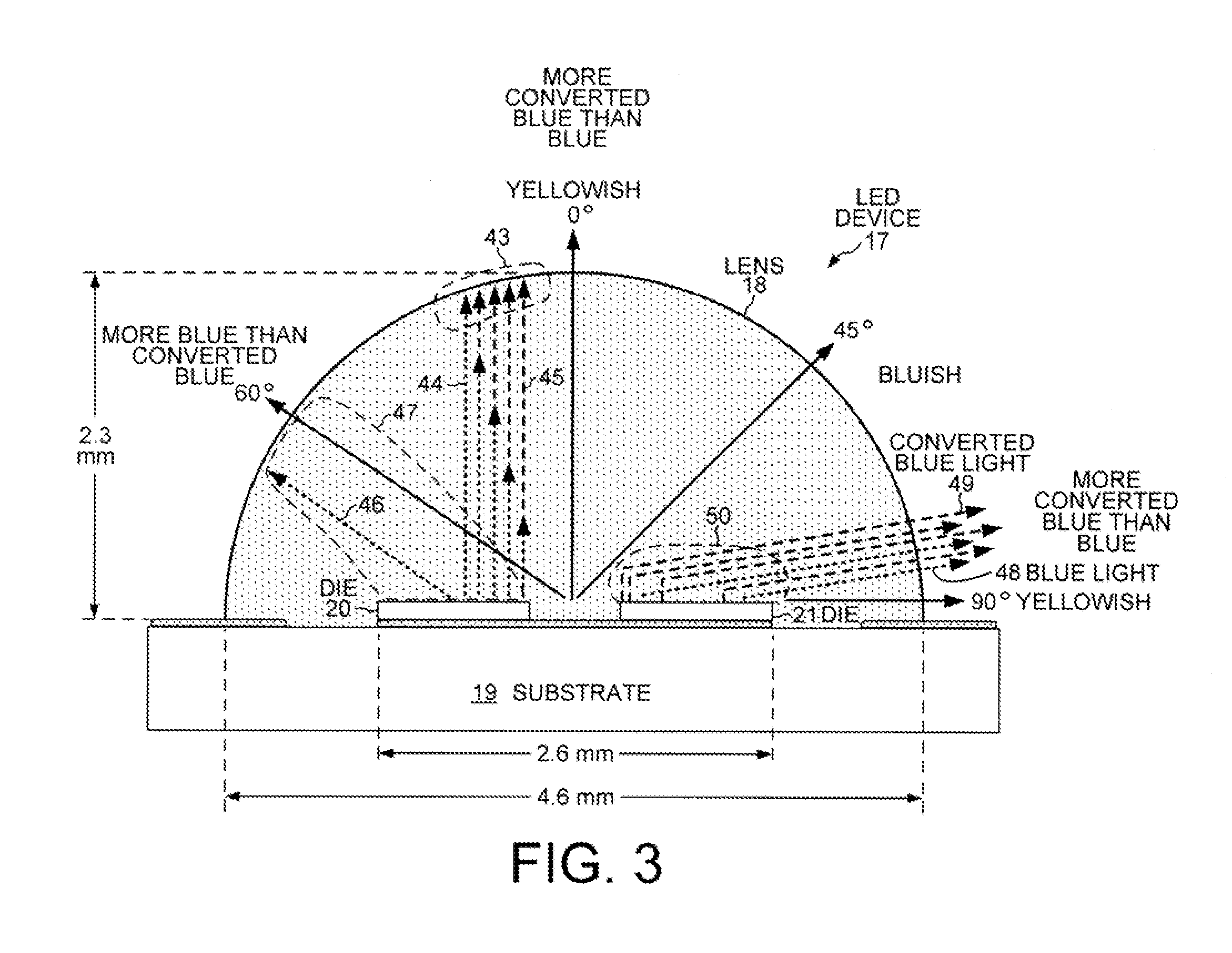LED Lens Design with More Uniform Color-Over-Angle Emission
- Summary
- Abstract
- Description
- Claims
- Application Information
AI Technical Summary
Benefits of technology
Problems solved by technology
Method used
Image
Examples
Embodiment Construction
[0030]Reference will now be made in detail to some embodiments of the invention, examples of which are illustrated in the accompanying drawings.
[0031]FIG. 6 is a cross-sectional view of a novel LED device 25 that emits light with a more uniform color over the entire range of emission angles. LED device 25 includes an array of light emitting diode (LED) dies disposed on the upper surface 26 of a substrate 27. For example, LED device 25 includes a two-by-two array of LED dies, including LED dies 28-31. Thermal interface materials 32 are disposed between the LED dies and substrate 27. For example, the thermal interface materials 32 may include a silver-filled epoxy deposited over a layer of Cu—Ni—Au alloy or Cu—Ni—Ag allow. A lens material is then overmolded over the LED dies 28-31 and forms the shape of a lens 33. For example, the lens material is a clear resin encapsulant, such as silicone or epoxy. The lens material is disposed on the upper surface 26 of substrate 27 and over the LE...
PUM
 Login to View More
Login to View More Abstract
Description
Claims
Application Information
 Login to View More
Login to View More - R&D
- Intellectual Property
- Life Sciences
- Materials
- Tech Scout
- Unparalleled Data Quality
- Higher Quality Content
- 60% Fewer Hallucinations
Browse by: Latest US Patents, China's latest patents, Technical Efficacy Thesaurus, Application Domain, Technology Topic, Popular Technical Reports.
© 2025 PatSnap. All rights reserved.Legal|Privacy policy|Modern Slavery Act Transparency Statement|Sitemap|About US| Contact US: help@patsnap.com



